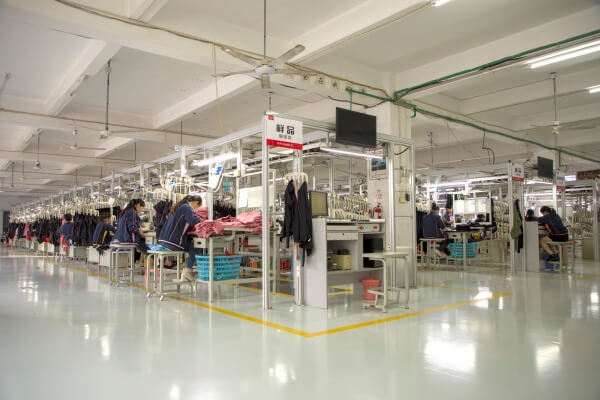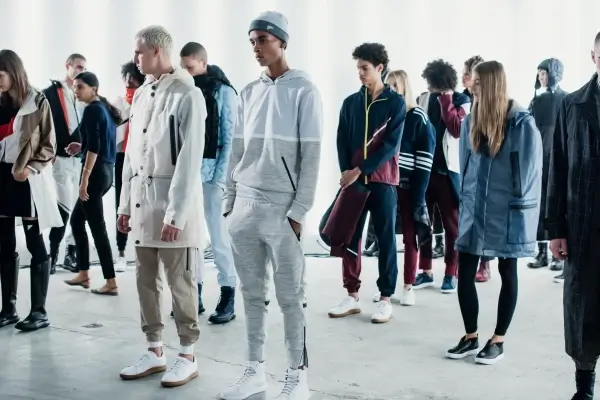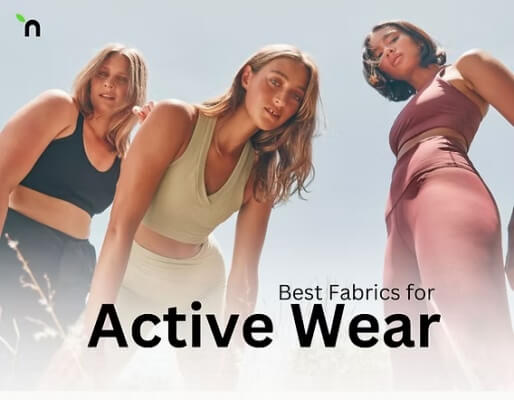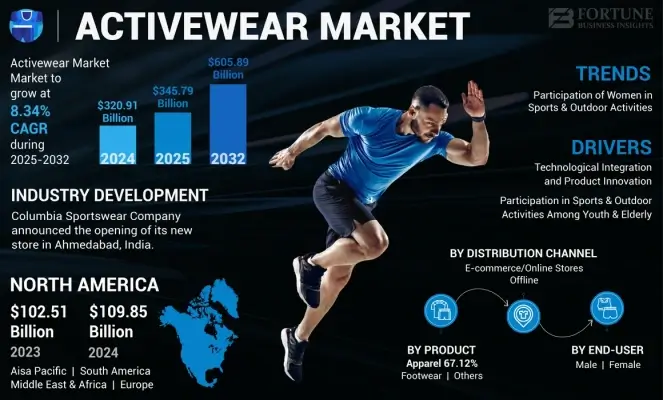Curating Your Collection: A B2B Guide to Activewear & Yoga Wear Styles, Functions & Material Options?
Many businesses struggle to develop a balanced activewear assortment. They either offer too few options, limiting consumer appeal, or create an overwhelming array of products that complicates inventory management and confuses customers.
A well-curated activewear collection should include core staples (leggings, sports bras, tanks) in various performance levels, complemented by seasonal trend pieces. Consider your target demographic when selecting styles—performance-focused athletes prioritize functionality, while athleisure consumers balance performance with fashion appeal.

At HAVING, we've helped dozens of brands develop successful activewear collections. Our experience manufacturing over $30 million in annual sales for more than 3,000 stores has given us unique insights into what makes a compelling product assortment. Let me share what we've learned about creating a balanced collection that maximizes sales while minimizing inventory complexity.
What Styles Should Your Activewear Collection Include?
Style selection is often the first challenge businesses face. Without understanding consumer preferences, it's easy to miss key styles that drive sales or include niche options with limited appeal.
A comprehensive activewear collection typically includes bottoms (leggings, shorts, joggers), tops (sports bras, tanks, tees), and layering pieces (jackets, hoodies). Each category should offer options for different activities, from high-intensity training to yoga to athleisure, with styles that reflect your brand's unique positioning and target customer.

When we first started manufacturing activewear at HAVING, most brands focused on a limited range of styles. Today, we produce comprehensive collections that address diverse consumer needs. Here's what we've learned about each style's market position and consumer appeal:
Core Style Categories
Bottoms
Leggings/Tights
- Market Position: Foundation of any activewear collection
- Consumer Appeal: Versatility, comfort, performance
- Style Variations: Full length, 7/8 length, high-waisted, mid-rise
- Functional Considerations: Opacity, waistband stability, gusset construction
Leggings typically account for 40-50% of activewear sales for most brands. We recommend offering at least 2-3 core legging styles with different features (e.g., pocket vs. no pocket, compression levels).
Shorts
- Market Position: Essential for warm weather and high-intensity training
- Consumer Appeal: Cooling, freedom of movement
- Style Variations: Bike shorts, running shorts, loose shorts
- Functional Considerations: Length options, liner vs. no liner, anti-ride up features
Shorts represent 15-25% of sales, with higher percentages in warmer months or regions.
Joggers/Sweatpants
- Market Position: Growing category bridging performance and lifestyle
- Consumer Appeal: Comfort, versatility, athleisure styling
- Style Variations: Slim fit, relaxed fit, cropped
- Functional Considerations: Stretch recovery, pocket functionality, ankle design
Joggers typically account for 10-20% of bottoms sales, with higher percentages in cooler seasons.
Tops
Sports Bras
- Market Position: Essential foundation piece
- Consumer Appeal: Support, comfort, style
- Support Levels: Light, medium, high impact
- Style Variations: Racerback, crossback, longline, crop
Sports bras represent 20-30% of tops sales, with different support levels needed for various activities.
Tanks/Camis
- Market Position: Versatile core style for multiple activities
- Consumer Appeal: Freedom of movement, cooling, layering potential
- Style Variations: Racerback, loose fit, cropped, longline
- Functional Considerations: Built-in support vs. standalone, moisture management
Tanks typically account for 30-40% of tops sales, particularly strong in warmer months.
T-Shirts/Long Sleeves
- Market Position: Essential for outdoor activities and modest coverage
- Consumer Appeal: Sun protection, versatility, modest option
- Style Variations: Fitted, relaxed, cropped, standard
- Functional Considerations: UPF protection, moisture-wicking, quick-drying
Tees represent 20-30% of tops sales, with long sleeves performing better in cooler seasons.
Outerwear
Jackets/Hoodies
- Market Position: Completing the activewear wardrobe
- Consumer Appeal: Warmth, pre/post workout coverage, athleisure styling
- Style Variations: Full-zip, half-zip, pullover, vest
- Functional Considerations: Breathability, stretch, pocket functionality
Outerwear typically accounts for 10-15% of overall collection sales, with higher percentages in fall/winter.
Yoga-Specific Considerations
Yoga wear has unique requirements that differentiate it from general activewear:
- Enhanced Stretch: Greater range of motion for poses
- Secure Waistbands: Stay-put design during inversions
- Minimal Hardware: Avoiding elements that press into the body during floor work
- Strategic Seam Placement: Preventing pressure points during seated poses
- Opacity Focus: Ensuring non-transparency during deep stretches
For detailed information on the technology and materials used in these different styles, visit our comprehensive guide: Activewear & Yoga Wear Technology & Materials: A Buyer's Guide to Performance Fabrics, Construction & Durability.
How Do You Balance Function and Fashion in Your Collection?
Creating activewear that performs well while meeting style expectations is challenging. Many businesses either over-index on technical features at the expense of aesthetics or prioritize fashion without adequate functionality.
Successful activewear collections balance function and fashion by creating a tiered assortment: performance-focused pieces with maximum technical features for serious athletes, studio/yoga styles emphasizing comfort and movement with moderate technical features, and athleisure pieces that blend performance elements with fashion-forward design for everyday wear.

At HAVING, we help our partners develop collections that address different consumer needs across the function-fashion spectrum. Here's our approach to creating a balanced assortment:
Performance Categories
| Category | Technical Focus | Style Focus | Typical % of Collection |
|---|---|---|---|
| High-Performance | Maximum technical features | Function-driven aesthetics | 20-30% |
| Studio/Yoga | Moderate technical features | Balanced function and style | 30-40% |
| Athleisure/Lifestyle | Basic technical features | Style-forward with performance benefits | 30-50% |
Technical Features by Category
High-Performance
- Maximum moisture management
- Compression elements
- Reinforced stress points
- Activity-specific features
- Reflective details for visibility
- Technical seam construction
Studio/Yoga
- Four-way stretch fabrics
- Excellent opacity
- Soft hand feel
- Minimal seams
- Secure waistbands
- Moderate compression
Athleisure/Lifestyle
- Comfort-focused fabrics
- Fashion-forward details
- Versatile styling options
- Easy care properties
- Crossover potential
- Trend-responsive elements
Balancing Your Assortment
The ideal balance depends on your target customer and brand positioning:
- Performance-Focused Brands: 40% high-performance, 40% studio/yoga, 20% athleisure
- Yoga/Wellness Brands: 20% high-performance, 60% studio/yoga, 20% athleisure
- Fashion-Forward Brands: 10% high-performance, 30% studio/yoga, 60% athleisure
For insights on market trends that should inform your collection development, visit our detailed analysis: Understanding the Activewear & Yoga Wear Market: Trends, Demographics & Opportunities for B2B Buyers.
How Do You Select Materials for Different Activities?
Material selection significantly impacts both performance and consumer perception. Different activities have distinct fabric requirements that must be addressed for product success.
Material selection should align with intended activity: high-intensity workouts need lightweight, maximum moisture-wicking fabrics (polyester blends); yoga requires soft-touch, opaque fabrics with excellent stretch (nylon-spandex blends); while athleisure pieces benefit from comfortable, easy-care fabrics that balance performance with everyday wearability.

At HAVING, we match fabric properties to specific activity requirements. Here's our guide to selecting the right materials for different applications:
Material Recommendations by Activity
High-Intensity Training/Running
Ideal Fabrics:
- Lightweight polyester/elastane blends (80-85% polyester, 15-20% elastane)
- Mesh panels for ventilation
- Technical knit structures for enhanced wicking
Key Properties:
- Superior moisture management
- Quick-drying capability
- Lightweight feel
- Excellent durability
- Odor resistance
Weight Range: 140-200 GSM (grams per square meter)
Yoga and Studio Activities
Ideal Fabrics:
- Nylon/elastane blends (75-80% nylon, 20-25% elastane)
- Brushed fabrics for soft hand feel
- Four-way stretch construction
Key Properties:
- Maximum stretch and recovery
- Opacity when stretched
- Soft touch against skin
- Gentle compression
- Matte appearance
Weight Range: 220-280 GSM for bottoms, 180-220 GSM for tops
Outdoor Activities
Ideal Fabrics:
- Durable polyester blends
- UPF-rated fabrics
- Abrasion-resistant constructions
Key Properties:
- UV protection
- Weather resistance
- Durability
- Quick-drying
- Temperature regulation
Weight Range: Varies by season (140-180 GSM summer, 200-300 GSM winter)
Athleisure/Lifestyle
Ideal Fabrics:
- Cotton/elastane blends
- Modal/elastane blends
- Brushed polyester/elastane
Key Properties:
- Comfort focus
- Soft hand feel
- Easy care
- Stretch for movement
- Casual appearance
Weight Range: 200-320 GSM for bottoms, 150-220 GSM for tops
Material Comparison Chart
| Material | Best For | Advantages | Considerations |
|---|---|---|---|
| Polyester/Elastane | High-intensity training, running | Superior moisture management, durability, colorfastness | Less soft hand feel, potential for odor retention |
| Nylon/Elastane | Yoga, studio activities | Excellent stretch/recovery, soft feel, opacity | Higher cost, less moisture-wicking than polyester |
| Cotton/Elastane | Light activities, athleisure | Natural feel, breathability, comfort | Poor moisture management, slower drying |
| Recycled Polyester | Eco-conscious collections | Sustainability story, similar performance to virgin | Slightly higher cost, potential consistency challenges |
For detailed information on material properties and performance characteristics, visit our comprehensive guide: Activewear & Yoga Wear Technology & Materials: A Buyer's Guide to Performance Fabrics, Construction & Durability.
How Do You Build a Minimum Viable Product Line?
Many businesses struggle with determining the right starting point for their activewear line. Starting too small limits appeal, while starting too large creates financial risk.
A minimum viable activewear collection typically includes 2-3 bottom styles (leggings, shorts or joggers), 2-3 top styles (sports bra, tank, tee), and potentially 1 outerwear piece. Each style should be offered in 2-3 colorways (black plus 1-2 seasonal colors). This creates 10-15 SKUs—enough to test market response while minimizing inventory investment.

At HAVING, we've helped numerous brands launch their first activewear collections. Based on this experience, here's our recommended approach to building a minimum viable product line:
Core Collection Strategy
For brands entering the category, we typically recommend:
Step 1: Select Core Styles
Choose 4-6 foundational styles:
- High-waisted legging (essential for any activewear line)
- Sports bra (medium support is most versatile)
- Tank top or tee (based on target customer preference)
- Shorts or joggers (depending on seasonality and customer)
- Optional: Light jacket or hoodie
Step 2: Determine Colorways
Start with essential colors:
- Black (accounts for 40-60% of activewear sales)
- 1-2 seasonal colors or brand signature colors
Step 3: Create Your SKU Matrix
This approach typically results in 10-15 SKUs:
- 4-6 styles × 2-3 colors = 8-18 SKUs
- Further refined based on budget constraints
Expansion Strategy
After launching your core collection and gathering market feedback, expand strategically:
Phase 2: Style Expansion
Add 2-3 additional styles based on customer feedback and sales data:
- If core collection is legging-focused, add shorts or joggers
- Expand tops selection with different support levels or styles
- Add layering pieces if initial collection focused on basics
Phase 3: Color Expansion
Expand color options strategically:
- Additional neutrals (navy, gray)
- Seasonal fashion colors
- Prints or patterns
Phase 4: Functional Expansion
Add styles for specific activities or occasions:
- Specialized yoga pieces
- High-performance training gear
- Athleisure crossover items
Collection Examples by Market Positioning
| Market Positioning | Recommended Initial Collection | Expansion Priority |
|---|---|---|
| Yoga-Focused Brand | High-waisted legging, medium-support bra, relaxed tank, light cover-up in black and 1-2 colors | Additional legging styles, specialized yoga props |
| Performance Training | Compression legging, high-support bra, performance tee, shorts in black and 1-2 colors | Specialized training pieces, performance technology |
| Athleisure Brand | Everyday legging, light-support bra, versatile tank, jogger in black and 1-2 colors | Lifestyle crossover pieces, expanded color options |
| Sustainable Focus | Core styles in recycled or organic materials, neutral colorways | Additional sustainable materials, eco-friendly innovations |
For guidance on developing your own private label activewear line, visit our detailed resource: Your Brand, Your Product: The Complete Guide to Private Label (OEM/ODM) Activewear & Yoga Wear Manufacturing.
How Do You Merchandise and Market Different Styles?
Clear communication about style functions and features is essential. Many consumers are overwhelmed by technical terminology and struggle to select the right products for their needs.
Effective activewear merchandising uses clear visual systems to communicate performance levels (icons, color coding, or rating systems), activity-specific recommendations, and benefit-focused descriptions. Organizing products by activity rather than just product type helps consumers navigate collections and find appropriate styles for their needs.

At HAVING, we work with our partners to develop effective merchandising strategies for their activewear collections. Here are the key approaches we've found most effective:
Performance Communication Systems
Activity Icons
Use simple icons to indicate intended activities:
- Running/Training
- Yoga/Studio
- Outdoor
- Everyday/Athleisure
Performance Rating Systems
Communicate technical levels clearly:
- Support levels for sports bras (light, medium, high)
- Compression levels for bottoms (light, moderate, firm)
- Moisture management ratings (good, better, best)
- Opacity ratings (especially for yoga wear)
Feature Highlighting
Call attention to key functional elements:
- Pocket presence and type
- Reflective details
- UPF protection
- Anti-odor treatment
- Quick-dry properties
Merchandising Strategies
In-Store Merchandising
For retail environments:
- Activity-based zones rather than just product types
- Outfit merchandising (showing complete looks)
- Technical feature callouts
- Fabric swatches for touch comparison
- Benefit-focused signage
Online Merchandising
For e-commerce:
- Filtering by activity and performance features
- Detailed fit and fabric descriptions
- Size and fit guides specific to activewear
- Activity-specific photography
- Video showing movement and performance
Collection Storytelling
Create cohesive narratives around collections:
- Activity-based stories (Yoga Collection, Run Collection)
- Benefit-focused groupings (Cooling Collection, Compression Collection)
- Material-based stories (Recycled Collection, Seamless Collection)
- Seasonal themes that unify diverse products
For market insights and consumer education strategies, explore our detailed analysis: Understanding the Activewear & Yoga Wear Market: Trends, Demographics & Opportunities for B2B Buyers.
Conclusion
Creating a well-curated activewear collection requires balancing style variety, functional performance, and material selection to meet the needs of your target market. By starting with a focused minimum viable product line and expanding strategically based on consumer feedback, businesses can build successful activewear offerings that minimize inventory risk while maximizing market appeal.
At HAVING, we combine manufacturing expertise with market insights to help our partners develop activewear collections that resonate with consumers and drive business growth.
For a comprehensive overview of the entire activewear category, including market trends and business opportunities, visit our Ultimate B2B Guide to Sourcing & Selling Activewear & Yoga Wear.
Frequently Asked Questions (FAQ)
What is the most popular activewear style?
High-waisted leggings are consistently the best-selling activewear style across most brands and markets, typically accounting for 30-40% of total activewear sales due to their versatility, comfort, and flattering silhouette.
How many styles should an initial activewear collection include?
A viable initial collection can be created with 4-6 core styles in 2-3 colorways, resulting in 8-18 SKUs. This provides enough variety to test market response while minimizing inventory investment.
What's the ideal ratio of tops to bottoms in an activewear collection?
Most successful activewear collections maintain a ratio of approximately 1.5 tops for every bottom style, reflecting how consumers typically purchase and wear these items (often pairing multiple tops with the same bottom).
Should activewear collections be seasonally updated?
Yes, but with a balanced approach: maintain core styles year-round (60-70% of collection) while refreshing seasonal colors and introducing trend-responsive styles (30-40% of collection) on a seasonal basis.
What colors sell best in activewear?
Black consistently accounts for 40-60% of activewear sales across most brands. Other strong performers include navy, gray, and deep jewel tones. Bright colors and prints typically perform better in tops than bottoms.
How should I balance performance and athleisure pieces in my collection?
The ideal balance depends on your target customer, but most versatile collections include approximately 30% performance-focused pieces, 40% studio/yoga styles, and 30% athleisure items. Adjust these percentages based on your brand positioning and customer activity preferences.
